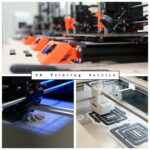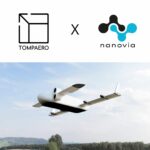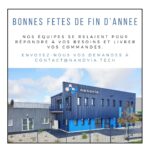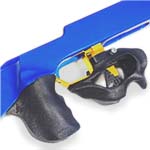
Nanovia PP CF – 3D printing at the Biathlon world championship
February 17, 2023Specialized in technical and composite filament manufacturer for industrial additive manufacturing, Nanovia commercializes many polymers, among which carbon fibre reinforced polypropylene (PP CF).
This materials unique properties are put to use by Athletics 3D, a company that specialized in custom made accessories for rifles, firearms, and marksman pistols for biathlon.
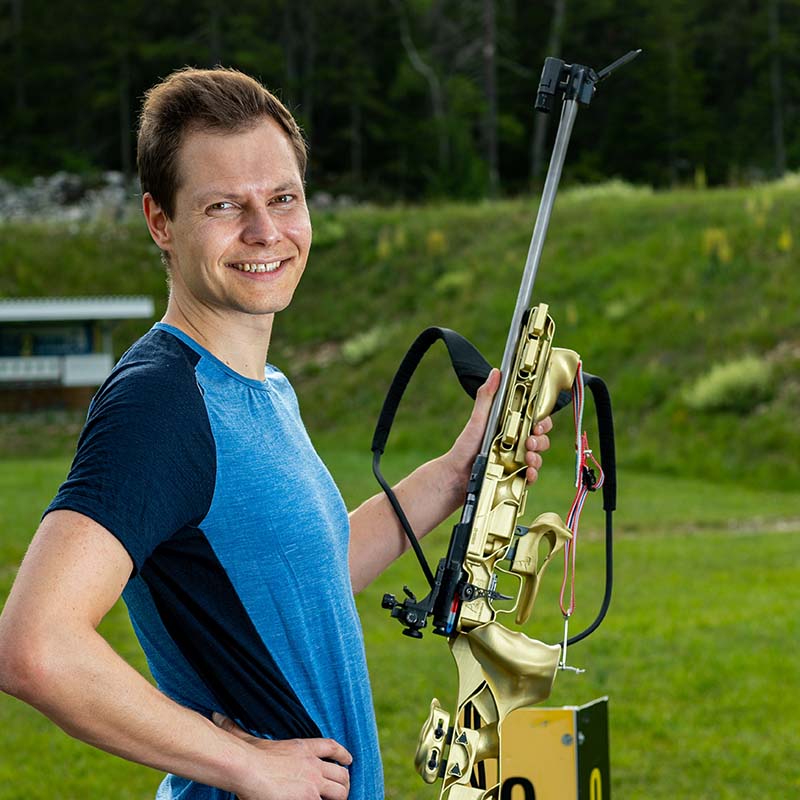
image copyright Alain Lamour
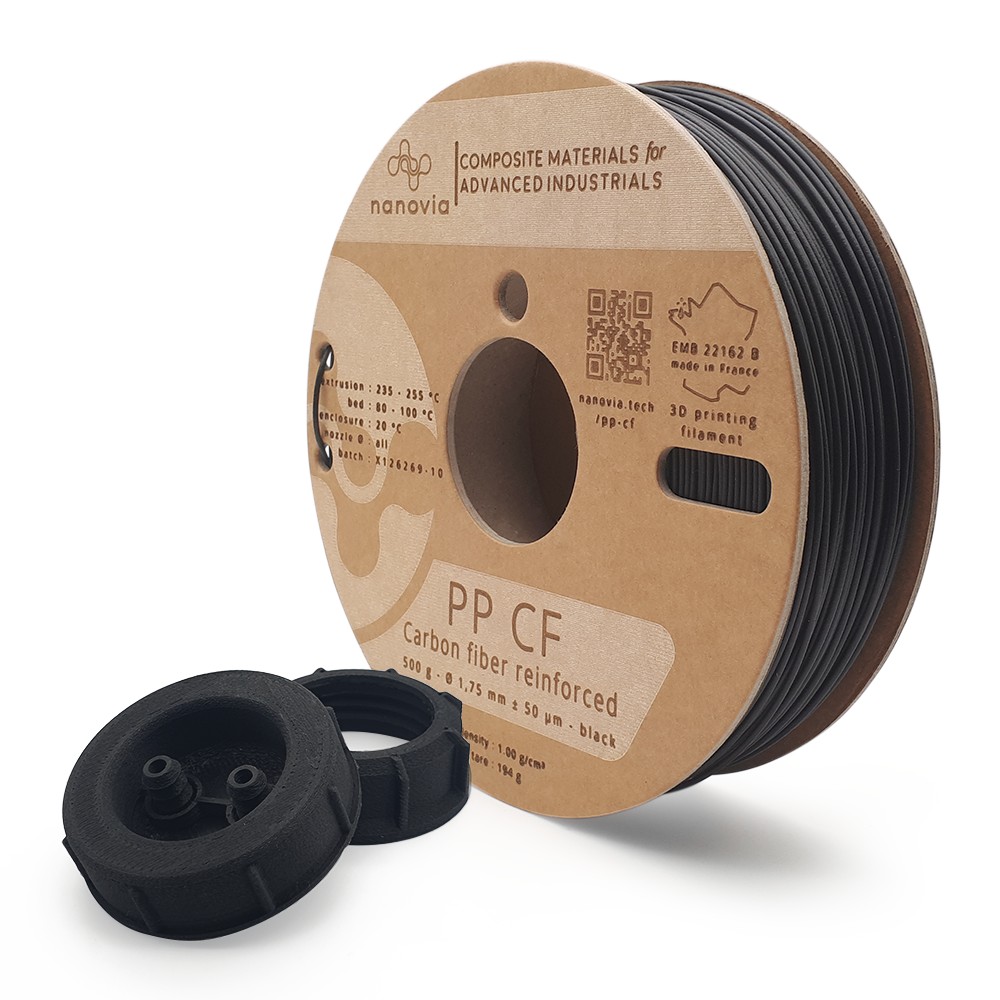
3D printer filament
What is Polypropylene ?
Polypropylene (PP) is thermoplastic polymer developed in the 1950‘s. It has three distinct variants (atatic, isotactic, and syndiotactic) with different mechanical and thermal properties.
PP is one of the most used plastic after polyethylene (PE), due to wide and universal applications, mainly in industrial settings, thanks to its toughness and lightness.
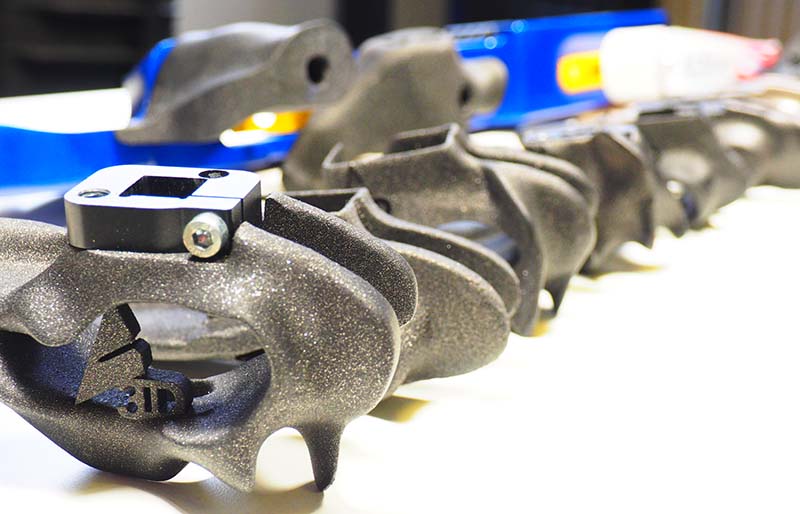
A “flexible” polymer
PP has most of the signs of a flexible material. We mainly know it in its amorphous state at room temperature. Meaning that its polymer chain is unstructured. PP’s glass transition temperature is negative, around -4 and -18°C depending on the variant.
Mechanical properties suited for industrial use
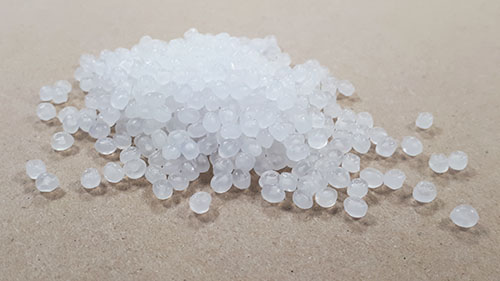
With the very low density of 1g/cm3, PP is the go to material of the automotive sector, it’s used for plastic injected body works, bumpers and rear view mirrors.
PP is non toxic and does not have a smell hence why it is also widely used in the food industry for feeding and reusable bottles as well as various packagings. A typical example of the use of PP, was up to recently plastic straws thanks to its high wear resistance to repeated deformations.
As with all thermoplastics, PP can be recycled, and currently is in France.
A high chemical resistance
It’s impermeable nature and resistance to most organic solvents make it a widely used material in the pharmaceutical industry, notably for piping and containers for agressive chemicals and laboratory accessories.
PP has a very low surface tension, making it resistant to most glues, this makes its use in additive fabrication tougher than other materials. To be “glued” it needs to be hot welded.
A material adapted for a wide range of temperatures
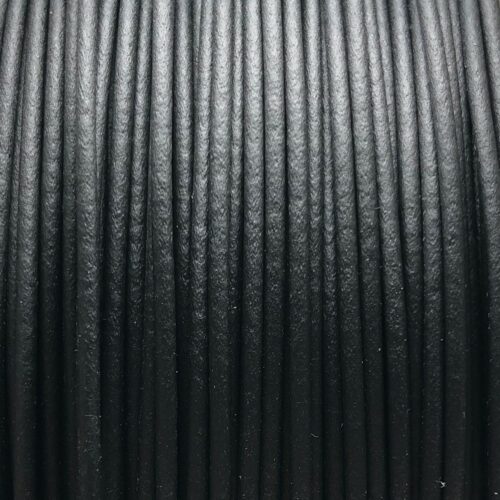
When used at high temperatures PP’s mechanical properties will slowly decline, unlike other polymers that fail abruptly. It’s dishwasher safe and often used for reusable plates and cutlery.
PP is not affected by humidity, and resists low temperatures. This makes it than when used in sub zero situation no ice crystals form inside of the material.
These properties make PP usable on a temperature scale of -20°C up to 120°C.
PP’s water resistance makes it a material that does not swell in humid environments staying the same volume and density, unlike the comparable in properties polyamide (PA).
PP is relatively flexible, and can be deformed by around 200% before tearing.
Why add carbon fibres to polypropylene ?
During the 3D printing process with fused filaments (FFF), PP is extruded at 260°C, heated materials expand, and when they cool back down shrink back to their original size. This shrinking back can cause the material to unstick from the 3D printer’s base plate. When unstuck, the part will deform or even completely fail the print. This phenonomen is called warping. Adding fibres counters this effect and hold the material in place.
Adding fibres also vastly increased the material’s rigidity. Whereas native PP can stretch up to 200% carbon fibre PP only stretched 2 to 3%

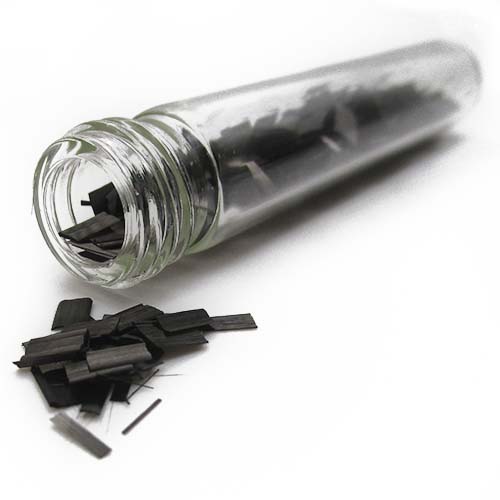
Whilst increasing the rigidity it also increases the ultimate material strength, meaning it can withstand more stress before yielding. Nanovia PETG GF (glass fibre reinforced) for example, is 40% more resistant than native PETG.
Furthermore, while native PP is sensitive to UV radiation, carbon fibres absorb them. This makes Nanovia PP CF ideal for any object with an outdoor usage.

Image credit Focus Outdoor
A plastic reserved for technical printing
3D printing PP requires a specialized set-up making the material challenging to work with.
- A PP based build plate, to “weld” the material to. This can also be a film that is applied to a normal build plate.
- A build plate with micro perforations for the material to anchor itself into.
- Specialized adhesives.
How Athletics 3D puts PP to use
PP’s properties make it suited for cold outdoor applications that require a high dimensional stability.
To demonstrate what is possible with Nanovia PP CF, we interviewed Clément Jacquelin, 2009 junior biathlon world champion, and founder of Athletics 3D in 2017.
Could you present yourself, as well as Athletics 3D ?
Athletics 3D produces exceptional products for exceptional champions. We’ve built up an environment of experts in their domain, to design inovative products and win with them.
I was junior world champion and when I graduated from the industiral engineering school in Grenoble i founded athletics 3D in Decemeber 2017 to answer the emerging call of international biathlon athletes.
Athletics 3D now equips multiple Biathlon world champions.
Clément Jacquelin – Athletics 3D
How do you design your equipment ?
We use different tools to design and optimize our products whilst respecting the objectives and required personalisations. How much a product needs to be personalized depends on the need of both the athlete and the coach. Depending on the sport, we have more or less freedom in our design.
To validate both material and design we use several tools to verify if the field data is on par with the expected result.
Clément Jacquelin – Athletics 3D
Which additive fabrication methods does Athletics 3D use ?
As of today, Athletics 3D uses every additive fabrication method available to answer to the varied demands of our athletes and their coaches. We are able to quickly get functional prototypes in the hands of our clients and when validated use the appropriate manufacturing method to conclude the project.
We also work with other sectors such as aerospace and high precision industries. We produce life like replicas and digital twins, polymer, metal, and flexible parts with varying degrees post treatment. We also guide them with hybrid workflow depending on the required technical characteristics.
Clément Jacquelin – Athletics 3D
Which king of materials does biathlon require?
Biathlon, especially during the world cup, is a highly competitive environment, for which, in order to stay at the top we are keeping a very close eye on technical and material innovations. Our athletes require technical solutions to further improve their equipment.
In biathlon, we need to keep in mind the exterior conditions that affect the material, such as the wide temperature swing from -20 to +30°C, wind impact, frequent impacts from the athlete and their competitors, the equipment’s weight, it’ firing response, and finally the materials ruggedness.
Clément Jacquelin – Athletics 3D
Which parts do you use Nanovia PP CF for?
PP CF is used since this year for the reasons previously mentioned, for the various grips and chin rests of the rifle, for both the standing and lying shooting sections. It ensures a solid and strong grip that our athletes can trust in.
Clément Jacquelin – Athletics 3D
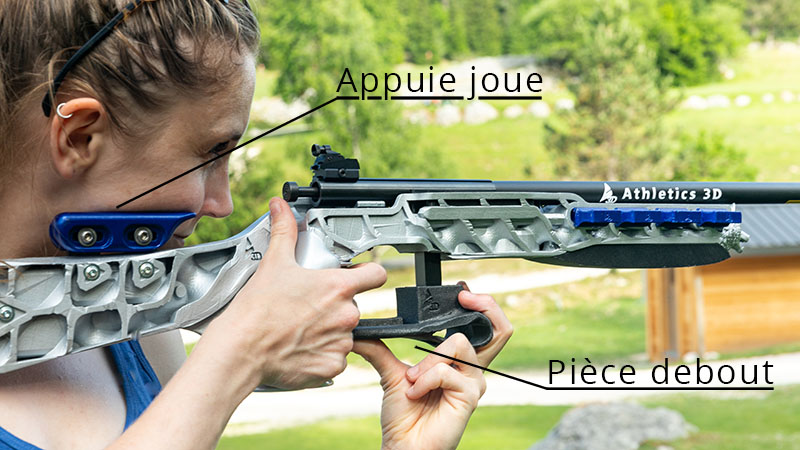
Other than biathlon, is Atheletics 3D active in other sports
Of course, we’re also active in other sporting disciplines. We’re regulary at the INSEP in Paris (nantional institution of sports , and perfomarmance expertise) to help different sporting federations understand, and integrate, additive manufacturing in their disciple, especially in regards to the upcoming european, world, and Paris 2024 Olympics.
Clément Jacquelin – Athletics 3D
To learn more about Clément Jacquelin and his work at Athletics 3D : Website – Instagram – Facebook – Twitter – Youtube – Linkedin
Tags: Nanovia PP CF